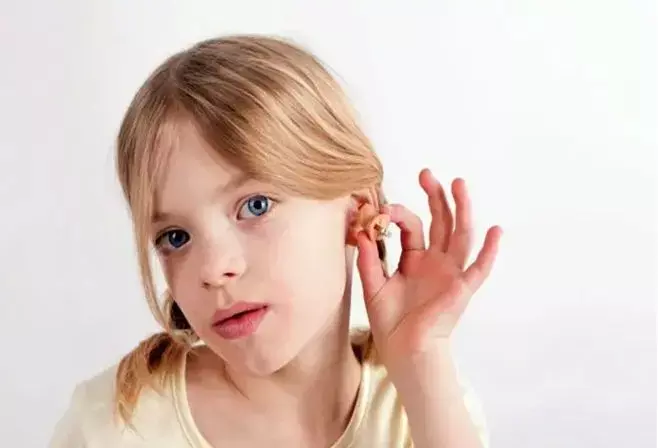- Home
- Medical news & Guidelines
- Anesthesiology
- Cardiology and CTVS
- Critical Care
- Dentistry
- Dermatology
- Diabetes and Endocrinology
- ENT
- Gastroenterology
- Medicine
- Nephrology
- Neurology
- Obstretics-Gynaecology
- Oncology
- Ophthalmology
- Orthopaedics
- Pediatrics-Neonatology
- Psychiatry
- Pulmonology
- Radiology
- Surgery
- Urology
- Laboratory Medicine
- Diet
- Nursing
- Paramedical
- Physiotherapy
- Health news
- Fact Check
- Bone Health Fact Check
- Brain Health Fact Check
- Cancer Related Fact Check
- Child Care Fact Check
- Dental and oral health fact check
- Diabetes and metabolic health fact check
- Diet and Nutrition Fact Check
- Eye and ENT Care Fact Check
- Fitness fact check
- Gut health fact check
- Heart health fact check
- Kidney health fact check
- Medical education fact check
- Men's health fact check
- Respiratory fact check
- Skin and hair care fact check
- Vaccine and Immunization fact check
- Women's health fact check
- AYUSH
- State News
- Andaman and Nicobar Islands
- Andhra Pradesh
- Arunachal Pradesh
- Assam
- Bihar
- Chandigarh
- Chattisgarh
- Dadra and Nagar Haveli
- Daman and Diu
- Delhi
- Goa
- Gujarat
- Haryana
- Himachal Pradesh
- Jammu & Kashmir
- Jharkhand
- Karnataka
- Kerala
- Ladakh
- Lakshadweep
- Madhya Pradesh
- Maharashtra
- Manipur
- Meghalaya
- Mizoram
- Nagaland
- Odisha
- Puducherry
- Punjab
- Rajasthan
- Sikkim
- Tamil Nadu
- Telangana
- Tripura
- Uttar Pradesh
- Uttrakhand
- West Bengal
- Medical Education
- Industry
Rare case of salivary gland choristoma originating in inner ear in 8-year-old:A report

Salivary gland choristoma (SGCh) is a rare benign tumor reported in several unusual sites, such as the gastrointestinal tract, the optic nerve, and the internal auditory canal, but never reported in the inner ear. It is a rare benign tumor characterized by a histopathological finding of normal salivary tissue, mucous and mixed predilection, and occasionally, fibrosis . SGCh is distinguished from ectopic salivary glands which are present in abnormal locations without fibrous capsules .
In a recent development, a team of doctors under Yoshiharu Yamanobe, have reported an extremely rare case of a large inner ear SGCh extending into the middle ear and the internal auditory canal (IAC), with congenital unilateral profound hearing loss and ipsilateral progressive facial nerve palsy.The case has been reported in Journal of Otolaryngology - Head & Neck Surgery.
The primary sites of SGCh have been reported in several organs, such as the gastrointestinal tract, the optic nerve, and the internal auditory canal . SGCh in the middle ear can sometimes be accompanied by an aberrant facial nerve and middle ear malformations. "We had reasons to consider that the inner ear was the primary site in this case. First, the patient had a congenital profound hearing loss. Second, no previous abnormalities in the tympanic membrane had been detected. Third, imaging studies suggested that the tumor was mainly located in the inner ear."the team elaborated.
An 8-year-old girl with a history of left profound congenital hearing loss presented to the department of Otolaryngology-Head and Neck Surgery, Keio University School of Medicine, Japan, with ipsilateral progressive severe facial nerve palsy (House-Brackmann Grade VI).
Clinical examination revealed the left tympanic membrane was swollen with a pulsatile tumor. Radiological investigations revealed a multilocular tumor in the inner ear extending into the middle ear and internal auditory canal (IAC).
Suspecting a diagnosis of salivary gland choristoma, the team performed a partial resection of the tumor by transmastoid approach to preserve the anatomical structure of the facial nerve. The tumor was pathologically diagnosed as SGCh. Anatomical preservation of the facial nerve was considered significant to retain any chances for recovery of the facial palsy after surger. No intraoperative or postoperative complication such as spinal fluid leakage was observed.
Two years after surgery, her facial function recovered to House-Brackmann Grade II and the residual tumor did not show regrowth on MRI.
"Although the natural course of this rare tumor is unknown, a partial resection is an acceptable treatment procedure when functional recovery of the facial nerve is anticipated."the team of physicians concluded. The residual tumor needs to be carefully monitored in future using MRI, and total removal of the tumor through transotic approach may be necessary if there is an increase in the size of the residual tumor."the team concluded.
For full article follow the link: https://doi.org/10.1186/s40463-021-00511-3
Dr Satabdi Saha (BDS, MDS) is a practicing pediatric dentist with a keen interest in new medical researches and updates. She has completed her BDS from North Bengal Dental College ,Darjeeling. Then she went on to secure an ALL INDIA NEET PG rank and completed her MDS from the first dental college in the country – Dr R. Ahmed Dental College and Hospital. She is currently attached to The Marwari Relief Society Hospital as a consultant along with private practice of 2 years. She has published scientific papers in national and international journals. Her strong passion of sharing knowledge with the medical fraternity has motivated her to be a part of Medical Dialogues.
Dr Kamal Kant Kohli-MBBS, DTCD- a chest specialist with more than 30 years of practice and a flair for writing clinical articles, Dr Kamal Kant Kohli joined Medical Dialogues as a Chief Editor of Medical News. Besides writing articles, as an editor, he proofreads and verifies all the medical content published on Medical Dialogues including those coming from journals, studies,medical conferences,guidelines etc. Email: drkohli@medicaldialogues.in. Contact no. 011-43720751


